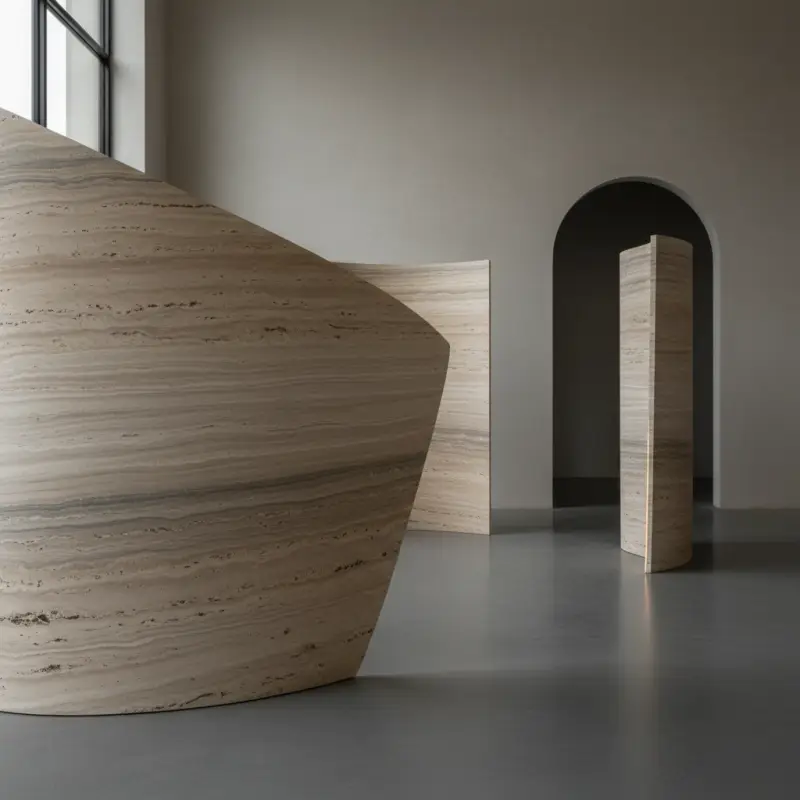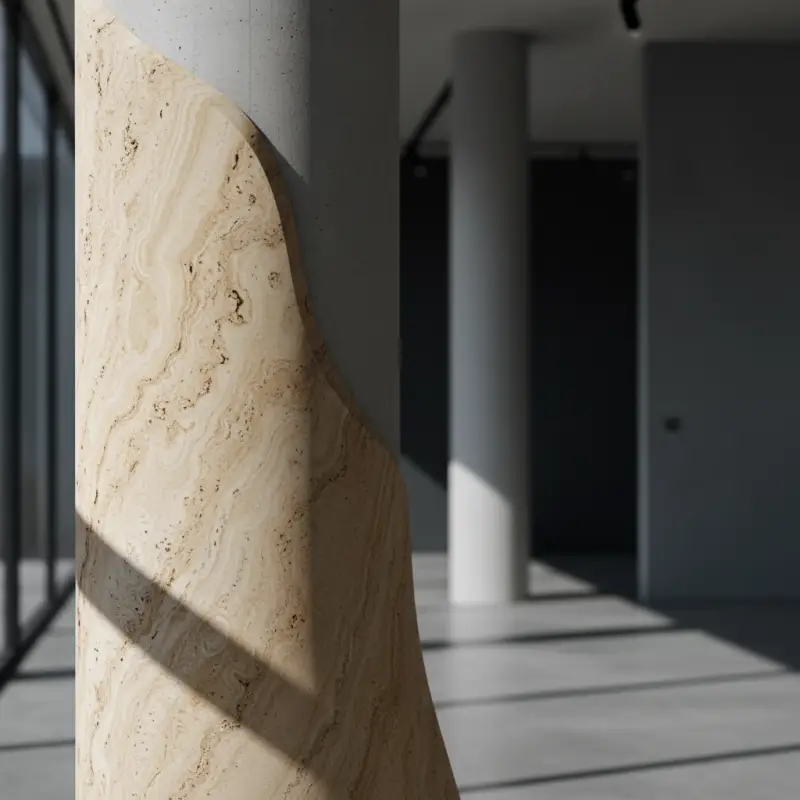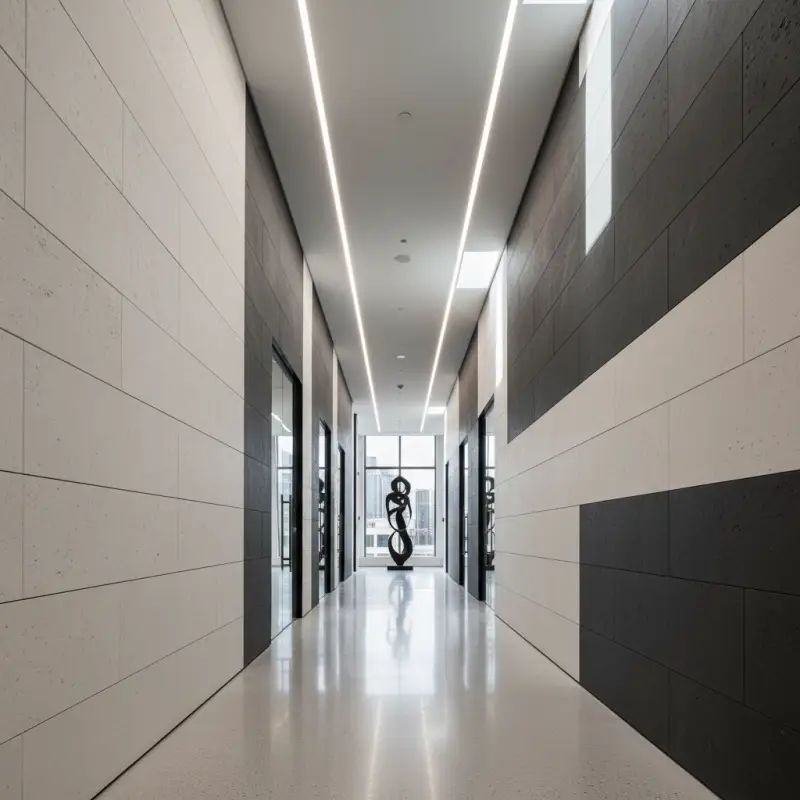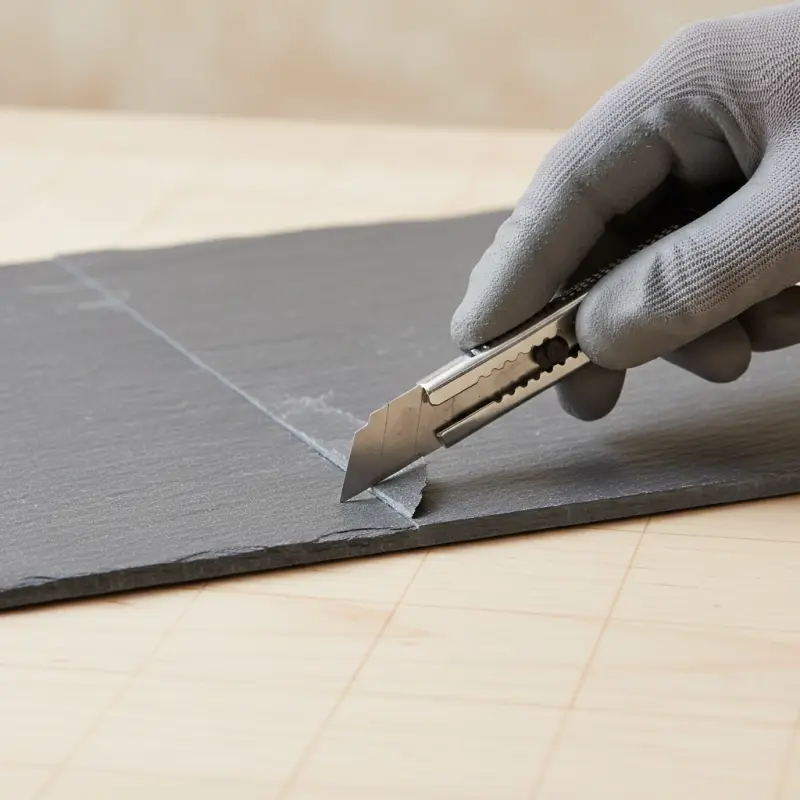
When light dances across a textured surface, a wall evolves from a mere partition to a work of architectural art. This quiet revolution is reshaping design studios globally, as architects are discovering the transformative possibilities of ECO-FLEXI MCM Flexible Natural Stone by Angkop Corp. Beyond its ability to conform to curves, this material redefines spatial storytelling, pushing the boundaries of design innovation.
This isn't an obsession with novelty—it's a liberation from the age-old constraints that have stifled architectural creativity for generations.
Material Intelligence Meets Design Freedom
Traditional stone veneer panels have always come with compromises: heavy, rigid, and inflexible, they limit architects to straight lines and predictable designs. Flexible natural stone, on the other hand, shatters these barriers, offering material intelligence that adapts to creative vision rather than restricting it.
[IMAGE_PLACEHOLDER]
The true potential of flexibility goes beyond curved surfaces. ECO-FLEXI MCM panels can effortlessly wrap around columns, flow over irregular geometries, and create seamless designs that would otherwise require complex cutting and labour-intensive installations with conventional materials. It’s not just a technical breakthrough—it’s a reimagining of creative possibilities.
Picture a reception desk that appears to flow like liquid stone or a fireplace surround that curves seamlessly into the ceiling. These designs aren’t constrained by material limitations; they are pure expressions of vision, achieved because the material adapts to the architect’s intent, not the other way around.
The Lightness Revolution
Structural lightness is perhaps the most transformative feature of flexible stone panels. While traditional stone veneer can weigh up to 15 pounds per square foot, ECO-FLEXI MCM panels weigh less than 2 pounds per square foot. This striking weight reduction impacts every aspect of a project.
Lighter materials reduce structural loads, simplify foundation designs, and streamline installation processes. But the true revolution lies in the newfound design freedom. Stone applications are now feasible on upper floors without reinforcement, on existing buildings without compromising structural integrity, and in retrofit projects where weight restrictions previously excluded stone entirely.
This lightweight design also redefines the installation process. Unlike traditional stone, which requires heavy machinery, specialized equipment, and large crews, flexible natural stone can often be installed by a single craftsperson using basic tools. This not only accelerates project timelines but also reduces installer fatigue, risk of injury, and overall labour costs.
Fire Safety Without Aesthetic Compromise
Modern building codes demand advanced fire safety measures, making fire-rated wall panels essential for commercial and high-rise residential projects. ECO-FLEXI MCM panels meet ASTM E84 Class A fire rating standards, ensuring peace of mind while retaining the authentic texture and rich visual depth of natural stone.

This dual-purpose innovation—blending aesthetic sophistication with fire safety compliance—removes the traditional trade-off between design and meeting building code standards. Architects can confidently specify natural stone wall panels for corridors, stairwells, and other fire-sensitive areas without sacrificing their creative vision or safety priorities.
With its superior fire rating, this solution unlocks new design possibilities in previously restricted spaces. Hotels can seamlessly extend stone finishes through egress paths, office buildings can elevate elevator lobby aesthetics, and residential high-rises can enhance common areas—all while adhering to the highest fire safety regulations.
Sustainable Design Intelligence
Eco-friendly wall panels aren’t just about environmental responsibility—they signify smart resource management. ECO-FLEXI MCM production minimizes waste compared to traditional stone quarrying and processing. By utilizing natural stone efficiently and reducing transportation energy through a lightweight design, this technology redefines sustainability.
The commitment to sustainability goes beyond manufacturing. Flexible stone panels allow precision cutting, virtually eliminating installation waste. While traditional stone installations can create up to 15-20% waste through cutting and fitting, flexible panels are cut to exact dimensions using basic tools, leading to minimal waste and a reduced environmental footprint.
Durability further enhances these eco-benefits. Resistant to weather and UV damage, these panels deliver decades of reliable performance with minimal maintenance, reducing replacement cycles and the overall environmental impact across their lifecycle.
Installation Efficiency Transforms Project Economics
The economics of architectural stone panels have been revolutionized with flexible technology. What once required skilled stonemasons and complex support systems can now be accomplished by general contractors with basic training, making high-quality stone installations more accessible and cost-efficient.

Thin stone panel installation offers a revolutionary approach, allowing direct application onto drywall, plywood, concrete, or even curved surfaces. This eliminates the need for structural modifications often required with traditional stone, significantly simplifying the process. What used to take weeks can now be completed within days, reducing both project complexity and timelines.
The tools required for installation are equally straightforward. Instead of heavy, specialized equipment, you only need standard utility knives, basic measuring tools, and adhesives. This accessibility not only lowers overall project costs but also broadens the pool of qualified installers, making it a more efficient and cost-effective solution.
Texture Interplay and Visual Rhythm
Beyond its practical benefits, thin stone panels open up new possibilities for texture interplay and visual rhythm. Their flexibility allows for smooth transitions between surfaces, creating a harmonious flow of materials that enhances spatial cohesion.
These panels retain the natural depth and variation of authentic stone while effortlessly conforming to complex geometries. This enables innovative surface articulation, allowing stone to wrap around corners, integrate with structural elements, and create seamless connections between planes—design possibilities that were once unattainable.
Light interaction becomes a standout feature, especially on curved or seamless surfaces. The natural stone texture refracts and reflects light at different angles, resulting in dynamic visual effects that change throughout the day. This transformation turns otherwise static surfaces into living, breathing architectural highlights.
Modern Stone Wall Ideas Come to Life
Contemporary modern stone wall ideas thrive at the crossroads of natural materials and cutting-edge technology. ECO-FLEXI MCM panels embody this synergy, delivering the authentic charm of natural stone while offering unmatched flexibility for modern applications. The result? Designs that seamlessly blend tradition with innovation.

Imagine feature walls that flow effortlessly, curving through interiors to serve as striking visual centerpieces without interrupting the structural harmony. Envision exterior cladding that wraps elegantly around building corners, eliminating the harsh lines and unsightly seams common with traditional materials. These innovations are transforming how we think about design continuity.
Indoor applications are equally revolutionary. Picture kitchen islands that seamlessly transition from horizontal countertops to vertical panels, bathroom walls that flow uninterrupted around fixtures, or commercial interiors where stone elements follow the organic rhythm of the architecture—unbound by the restrictions of conventional materials.
The Future of Stone in Architecture
The growing fascination with bendable stone panels marks a pivotal moment in architecture’s evolution towards material intelligence—a philosophy of choosing materials that enhance creativity rather than limit it. ECO-FLEXI MCM embodies this ethos by offering genuine natural stone engineered to adapt to bold design visions instead of constraining them.
This shift isn’t just influencing individual projects; it is redefining the architectural discipline as a whole. Design studios are now considering material adaptability early in the creative process, ensuring that innovative concepts are no longer hindered by the practical limitations of execution.
The transformation also extends to client relationships. Without being confined by material constraints, discussions move away from "what’s possible" and instead focus on "what’s ideal"—a dynamic that fosters deeper collaboration and unlocks boundless potential.
Redefining Spatial Experience
At its heart, the adoption of flexible stone in architecture reflects a larger aspiration: crafting spaces that resonate emotionally. When materials align seamlessly with design intent, the resulting environments feel more harmonious, purpose-driven, and profoundly engaging.

Flexible stone surfaces provide seamless transitions that remove visual interruptions, resulting in a cohesive and immersive spatial experience. The gently curved edges evoke an effortless, natural appeal, while the material’s organic flow enhances aesthetics, delivering a unified and harmonious sensory impact.
Beyond aesthetics, this seamless design offers practical benefits. With fewer joints, the surface becomes easier to clean, less prone to wear, and significantly more durable over time.
Curious about how ECO-FLEXI MCM's Flexible Natural Stone can transform your next project? Discover our full range at angkop.ca or connect with our design experts at info@angkop.ca to discuss your unique application needs.
The future of stone in architecture isn’t about replicating tradition—it’s about embracing innovative materials that preserve the timeless beauty of natural stone while meeting the bold, forward-thinking demands of contemporary design.

Add comment
Comments